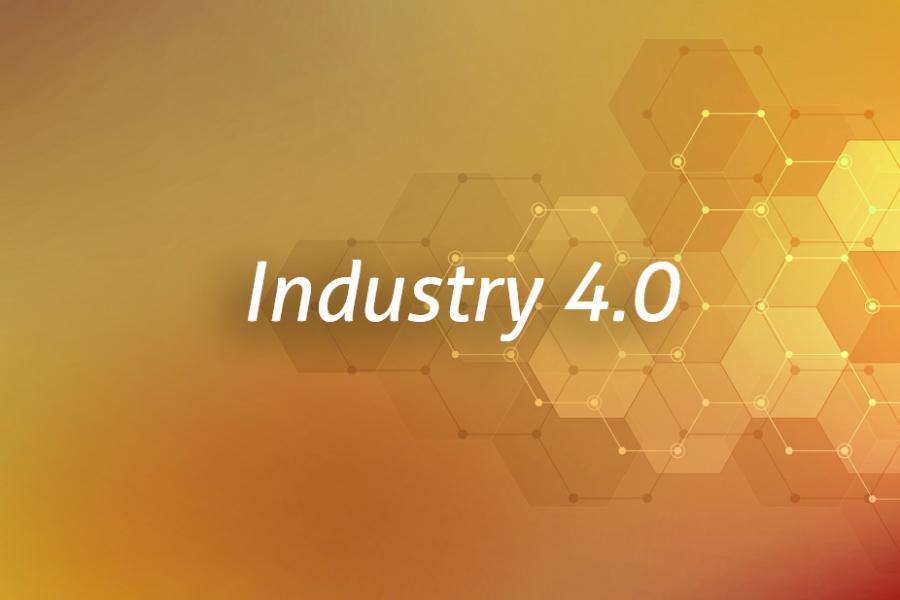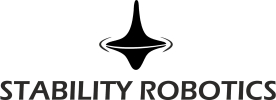What is Industry 4.0 and How it managing digital transformation?
Introduction
Product manufacturing is undergoing a quiet change by a new Industrial Revolution. Manufacturing companies can make immediate production changes based on real-time data by combining Big Data analysis, machine learning, and IIoT. The Fourth Industrial Revolution, aka Industry 4.0 will introduce higher quality products to the market at a cheaper cost in less time.
What is Industry 4.0?
The title Industry 4.0 relates to the fourth Industrial Revolution, a phase in the evolution of mankind’s manufacturing processes. We have had three Industrial Revolutions in history, the first took place in Britain during the 18th century, with mechanization. The Second Industrial Revolution took place around the beginning of the 20th century with improved manufacturing methods and assembly lines. And the Third Industrial Revolution took place in the 1960s with the implementation of digital technology.
Industry 4.0 technologies and processes are pointing the way for digital transformation in the manufacturing industry. From design engineers to procurement managers, manufacturing teams all around the world have felt its impacts on their business models. The main idea of Industry 4.0 is to create an adaptable and comprehensive ecosystem for manufacturing processes, technology, and applications. This idea of smart manufacturing will revolutionize how products are developed, and lead to more automation and less routine manual labor.
Internet of Things (IoT) – The key Technology of Industry 4.0
For a long time, IoT has been seen as the backbone technology behind Industry 4.0. With real-world IoT implementations proceeding swiftly, we can now see the vision of Industry 4.0 starting to take shape in the form of smart factories and digital supply chains powered by data, insight, and automation.
With IoT driving Industry 4.0 forward, machines and business processes are now communicating without human intervention, freeing companies to focus on business outcomes. This is enabling organizations to improve business agility, increase business automation, and enhance the customer experience.
When combined with edge computing, artificial intelligence, and machine learning IoT is helping companies to improve performance and forecast market shifts through actionable intelligence and real-time visibility. Keeping production lines running smoothly is another important priority. IoT allows manufacturers to acquire real-time insights that can help reduce unintended downtime, improve worker safety, and increase output. When combined with AI and machine learning, IoT helps manufacturers to observe asset health and predict, diagnose, and resolve issues before they disrupt production. IoT can also support streamline system administration to maximize productivity. And when combined with Mixed Reality, IoT can be used to empower professionals with the information and tools to improve productivity and first-time fix rates.
What is the Industrial Internet of Things (IIoT)?
The Industrial Internet of Things is all about interconnected machines, sensors, and many other devices. They are networked together and interacting with computer-driven industrial applications for many manufacturing and energy management sectors of business. IIoT is a development of a control system that provides a significant change in automation by using cloud computing to enhance and optimize process controls.
Industrial IoT depends on many technologies but the key technologies originally consist of Artificial intelligence, Cybersecurity, Cloud computing, Edge computing, and Data mining.
IIoT is changing the way industrial companies operate from day-to-day. Whether it’s enabling predictive analytics to identify corrosion inside a refinery pipe, providing real-time production data to uncover additional capacity in a plant, or quickening new product development by feeding operations and service data back into the product design process, IIoT and its supporting software are driving powerful business outcomes.
By merging machine-to-machine communication with industrial big data analytics, IIoT is driving unique levels of productivity, efficiency, and performance. And as a result, industrial companies in tool manufacturing, chemicals, automotive, food and beverage, steel, and many other industries are reaping transformative operational and financial benefits.
Setbacks faced adopting Industry 4.0
Although this trend gives precise business pros, it has also led to the existence of manufacturing networks that are more interconnected, complex, and heterogeneous. In effect, today’s manufacturing networks are working with an increased risk of cyberattacks.
Cyber incidents are not limited to cyberattacks. A cyberattack on a manufacturing plant would be damaging, but it’s not the most prominent threat to a network’s operational flow. In fact, small to major network or process interruptions due to misconfigurations, erroneous commands, software errors, or device failures, can occur almost daily. Fortunately, there are steps you can take to limit these cyber incidents from impacting production.
Here are three common challenges faced by manufacturers now and how we can address them to build a more cyber resilient network:
- Identifying and Correcting Misconfigurations: Network misconfigurations include unstable or dead links, commands that don’t reach the destination, network service or IP misconfiguration, “noisy” devices causing traffic floods, and devices misconfigured by the vendor or system integrator. These misconfigurations happen regularly and can have a mild impact on your bottom line, as the network will not always operate reliably or accurately. To maintain operational continuity, you need to have visibility of all communications and assets within your system and leverage this visibility to identify any existing misconfigurations.
- Preventing Operational Disruptions: Operational hiccups can be formed by anything from malfunctioning devices to process instability and anomalies. These glitches may happen very often and can have a serious impact on your organization’s bottom line. The primary step to prevent disruptions is to assess the current working state of your network and take the relevant steps to fix any existing anomalies. The next step is to implement constant monitoring of your network to diagnose the early indicators of threats to operational continuity.
- Securing the Network Against Cyber Threats: Although rare, a cyberattack could be devastating to your business reputation and bottom line. Whether it’s a targeted or ransomware, zero-day attack, these incidents can be identified and prevented with the right plan in place. First, your organization must have an up-to-date record of its digital assets to develop a knowledge of its network to pinpoint any existing vulnerabilities within it. Second, you need to have authentication processes in place to safeguard your digital and physical assets. Third, your organization needs to have the ability to detect unusual activity. The most effective way to attain this is to deploy a continuous monitoring solution. Finally, your organization should have a contingency plan in place to immediately respond and recover from a potential cyberattack.
Digital Transformation in Manufacturing
The manufacturing states are continuously changing due to volatility in global, economic, and policies. Industry 4.0 means customers no longer want mass-produced items. Instead, your customers are demanding customized products that are designed using smart technologies. The solution is connecting data to people and machines with the help of sensors. Workers and business processes must be tracked continuously. This is essential for the factory to know what it needs to streamline processes. Anything that cannot modify must be quickly rejected, as it will only get in the way of the smart factory from reaching this fourth revolutionary change.
These are the 9 core technologies that make up the bulk of the manufacturing process in the new standard.
- Big Data and Analytics
- Robotics/ Automation
- Additive manufacturing/ 3D Printing
- Simulation
- Horizontal and Vertical System Integration
- Cloud Computing
- Industrial Internet of Things (IIoT)
- Cybersecurity
- Augmented and Virtual Reality
BIG DATA AND ANALYTICS
Manufacturers use big data analytics in an identical way as most other commercial entities except with a smaller focus. They collect huge volumes of data from smart sensors via cloud computing and IIoT platforms that allow them to reveal patterns that help them increase the efficiency of supply chain management. Big data analytics can help them identify hidden variables causing bottlenecks in production. After identifying the source of the problem, manufacturers use targeted data analytics to better figure out the underlying cause of bottleneck variables. These aids manufacturers improve output while lessening cost and eliminating waste.
ROBOTICS/ AUTOMATION
Robots that can function on their own with minimal supervision are important tools in Industry 4.0. Although robots will replace some manufacturing workers given their extended efficiency and operational sustainability, it’s a common part of their transition to roles of greater scope and responsibility in the workplace. But it’s not all bad news for human workers, either, as Industry 4.0 still provides lots of opportunities for capable and experienced individuals. Workers that continue will likely advance to higher ranks in the organization or different areas of the factory floor.
ADDITIVE MANUFACTURING
Additive Manufacturing developed as a prototyping method but has steadily become an essential part of the production process. Using modern industrial 3D printers and industry-specific additives, allows manufacturing units to create low-cost products in a short period of time, with better design and faster than before.
Simulation
Simulation is an important technology for developing and designing experimental models to enhance decision-making as well as the design and operations of complex and smart production systems. It could also help organizations to assess the implementation barriers, costs, risks, impact on operational performance, and a roadmap toward Industry 4.0. The use of visual aids and software to simulate complex processes and designs has become common in every engineering or manufacturing firm.
HORIZONTAL AND VERTICAL SYSTEM INTEGRATION
In the company, horizontal integration ensures machinery, IoT devices, and engineering processes work together continuously. Vertical integration assures production data is used at higher organizational levels when making marketing, staffing, and other decisions. Through the horizontal integration of the cloud and manufacturing unit, an exchange of data and information must be established between the firms and the geographically remote sites across the value chain. In vertical integration, the IoT and services grant immediate access to IT and production systems.
CLOUD COMPUTING
In Industry 4.0, companies with collaborative supply chains serve from using the cloud in various ways. The real-time display of centralized information by multiple parties along the supply chain supports management to take a more proactive approach. If conditions change or a problem arises, companies can nimbly react to ensure and tweak efficiencies while reducing the risk of re-occurring issues. The IoT leverages cloud computing in a primary way for altering shipping and logistics, removing different person-to-person procedures, and replacing them with machine-to-device intercommunication.
Industrial Internet of Things (IIoT)
The widespread use of embedded computing allows for decentralization as every device can communicate remotely and provide data at a moment’s notice. Real-time responses will be much faster due to the decentralization process. By integrating manufacturing units with cloud, IIoT and Industry 4.0 offer new possibilities to make processes transparent and flexible while responding accurately to individual customer requirements. IIoT solutions are used from product design to production, logistics, marketing, and sales, after-sales service.
CYBERSECURITY
Increased connectivity comes with an increased risk of security vulnerabilities. This creates a need for cybersecurity and preventive measures to safeguard information. While adopting the changes that digitalization and automation bring, companies need to also carefully manage a new generation of exposures. Constantly emerging cyber threats and other malicious risks can interrupt interconnected distribution channels and possibly even cause physical damage or destruction of machines. In this landscape, organizations must ensure the new ways they are transacting remain resilient.
AUGMENTED AND VIRTUAL REALITY
AR is the final frontier in the Industry 4.0 standard. Current uses include choosing parts in warehouses and visualizing possible design options. In the future, it can surely be developed to provide real-time data and information for workers.
The application of VR in Industry 4.0 has a different orientation due to the level of immersion it provides to the user. Using VR, exact simulations of products, processes, or production plants can be built in order to see their operation in the first person and in an engaging way.
Conclusion
Industry 4.0 already exists in a large number of companies across the world. Still, it is worth saying that all the modifications required to enter this industrial revolution and to achieve the benefits that may come with it entirely will not happen overnight and this is an ongoing process that is continuously improving. As we can see, AI is one of the most essential components of this revolution.












